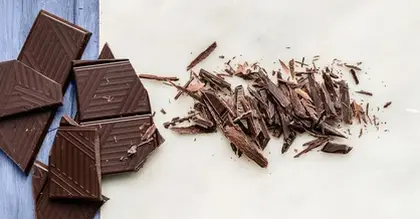
- According to a new study, a compound in red wine affects how the body metabolizes alcohol, which can cause headaches.
- Red wine is more likely to cause headaches than white wine because of the higher amount of histamines, tannins, and quercetin.
- To minimize headaches, experts recommend drinking white wine, staying hydrated, and avoiding drinking on an empty stomach.
During the holiday season, wine is typically the alcoholic beverage of choice. Unfortunately, for some people, even a small amount of wine—red in particular—can cause a headache.
A new study, published in the journal
Interestingly, quercetin is an antioxidant found in fruits such as grapes and vegetables. However, when combined with alcohol, it can have negative side effects.
“The most interesting aspect of this project is that the effect is not direct,” wine chemist and corresponding author Dr. Andrew Waterhouse, professor emeritus with the UC Davis Department of Viticulture and Enology, told Medical News Today. “In other words, we found quercetin glucuronide to be the ‘culprit,’ but if you consume it in another food, you would not get a headache.”
“According to our hypothesis, a headache will only occur when quercetin and alcohol are consumed simultaneously. I think that is why it has taken so long to sort this out,” Dr. Waterhouse said.
“Red wine contains more tannins and histamines compared to white wine, which are contributing factors of headaches,” said Dr. MaryAnn Mays, a neurologist at the Cleveland Clinic. “Quercetin a new potential factor, another culprit for why people experience red wine headaches.”
Specifically, quercetin changes form when it’s metabolized with alcohol.
“Issues arise when quercetin interacts with alcohol during metabolism because it converts to a different form— quercetin glucuronide,” said Carolyn Stolte, a certified nurse practitioner with Mercy Personal Physicians in Baltimore, Maryland.
“Researchers found that this metabolism results in the accumulation of acetaldehyde—an established toxin. This causes the classic symptoms of flushing, headaches, and nausea that are commonly associated with red wine,” she explained.
Historically, it has been believed that red wine also contains higher levels of histamines and tannins compared to white wine, which some people can be sensitive to, Stolte said. Individuals predisposed to headaches may find even small amounts of wine triggering due to quercetin.
Moreover, quercetin levels are influenced by grape cultivation, with sunlight exposure during growth potentially leading to higher quercetin content.
“When we consume alcohol, our bodies quickly go to work to break it down into other compounds that are easier to get rid of,” said Dr. Nate Wood, an instructor of medicine and medical education fellow in the section of general internal medicine at the Yale School of Medicine.
“One of these compounds is called acetaldehyde. Acetaldehyde is known to cause many of the nasty hangover symptoms we’re all familiar with, including headaches. Thankfully, our bodies make an enzyme to break down acetaldehyde, too. It’s called aldehyde dehydrogenase,” he continued.
“You probably know someone in your life who seems to be affected more strongly by alcohol. They get very flushed when they drink. They don’t seem to be able to drink as much as others, and they may get worse headaches when they do drink. In some, this is due to a genetic variation that causes aldehyde dehydrogenase to work less effectively. As a result, acetaldehyde builds up in their body more quickly, and they experience hangovers more strongly.”
— Dr. Nate Wood
A derivative of quercetin present in red wine, called quercetin-3-glucuronide, may have a similar effect. New research shows that it works to actually block aldehyde dehydrogenase, Dr. Wood added.
Just like in those who have the genetic variation, aldehyde dehydrogenase then doesn’t work very well, acetaldehyde builds up, and headaches ensue. Since red wine has been shown to contain more of this quercetin derivative than white wine, this could explain why red wine seems to cause more headaches than white wine.
First, it’s important to understand that “there are two parts of alcohol metabolism: alcohol dehydrogenase and acetaldehyde dehydrogenase,” Mays stated. “Quercetin could be blocking that metabolism, you may get the buildup of acetaldehyde.”
There may also be a genetic component to take into consideration.
“Certain individuals may lack the enzyme that can metabolize alcohol in wine, which involves the breakdown of histamines,” said Mays. “Those individuals are more susceptible.”
East Asian genetics and alcohol
For example, approximately
“When [some] Eastern Asians drink, the levels of acetaldehyde will be higher in their blood and cause more of the negative side effects of alcohol: facial flushing, headaches, fast heart rate, and nausea,” Dr. Wood stated.
“For them, the effects of red wine on their body will likely be similar to other types of alcohol. The quercetin derivative doesn’t have the opportunity to exert any blocking effect on their aldehyde dehydrogenase enzyme because the enzyme already doesn’t work,” he explained.
Those who have a working form of aldehyde dehydrogenase in their body, however, may notice worse headaches with red wine compared to other types of alcohol. This is due to the quercetin derivative blocking their body’s functional aldehyde dehydrogenase, Dr. Wood noted.
“Our understanding of why some individuals are more susceptible to wine-induced headaches is still evolving,” said Stolte.
“New research suggests that there may be a genetic component influencing sensitivity to wine. The way people metabolize compounds like histamines, tannins, and quercetin varies, and this could be linked to their individual genetic makeup,” he added.
It is also important to take into account the overall Health and medical conditions of the individual, Stolte added.
“For example, those with underlying migraines are more likely to experience wine-induced headaches when compared to the general population. This is something the scientists at the University of California are looking to explore more in the future,” she said.
Women may be more prone to headaches
In addition, women are more susceptible to headaches from wine.
“Women have more body fat than men, which stores alcohol,” Dolores Woods, a registered dietitian with UTHealth Houston School of Public Health, explained. “Women have lower alcohol dehydrogenase (the enzyme that metabolizes alcohol) in their blood, so it takes longer for women to metabolize alcohol than men.”
Mays suggests following these guidelines:
- Avoid red wine, drink white wine (avoid or use in small qualities).
- Choose high quality wines. Lower-quality wines may be higher in sugar.
- Avoid drinking on an empty stomach.
- Practice the 1 to 1 rule (glass of wine then a glass of water or sip of wine then sip of water).
It’s also important to note that certain red wines are better than others. Mays recommends pinot noir. “Pinot noir is a better choice compared to the fuller body wines like cabernet. This could be because it has a lower amount of tannins. It could also be certain grapes or regions that play a part as well.”
However, more research is needed when it comes to specific types of red wine.
Regarding white wine recommendations, “Sauvignon blanc, chardonnay, or sparkling wines are lower in histamines,” said Woods.
“White wines are lower in tannins,” Woods explained. “If you think that sulfites cause your headaches, try one without added sulfites.”
New research shows the compound quercetin found in red wine impacts how the body metabolizes alcohol, which can result in headaches.
Red wine has a greater chance of causing headaches because of the higher amount of tannins, quercetin, and histamines.
To decrease the risk of headaches, experts suggest switching to white wine, drinking plenty of water, and avoiding drinking on an empty stomach.





